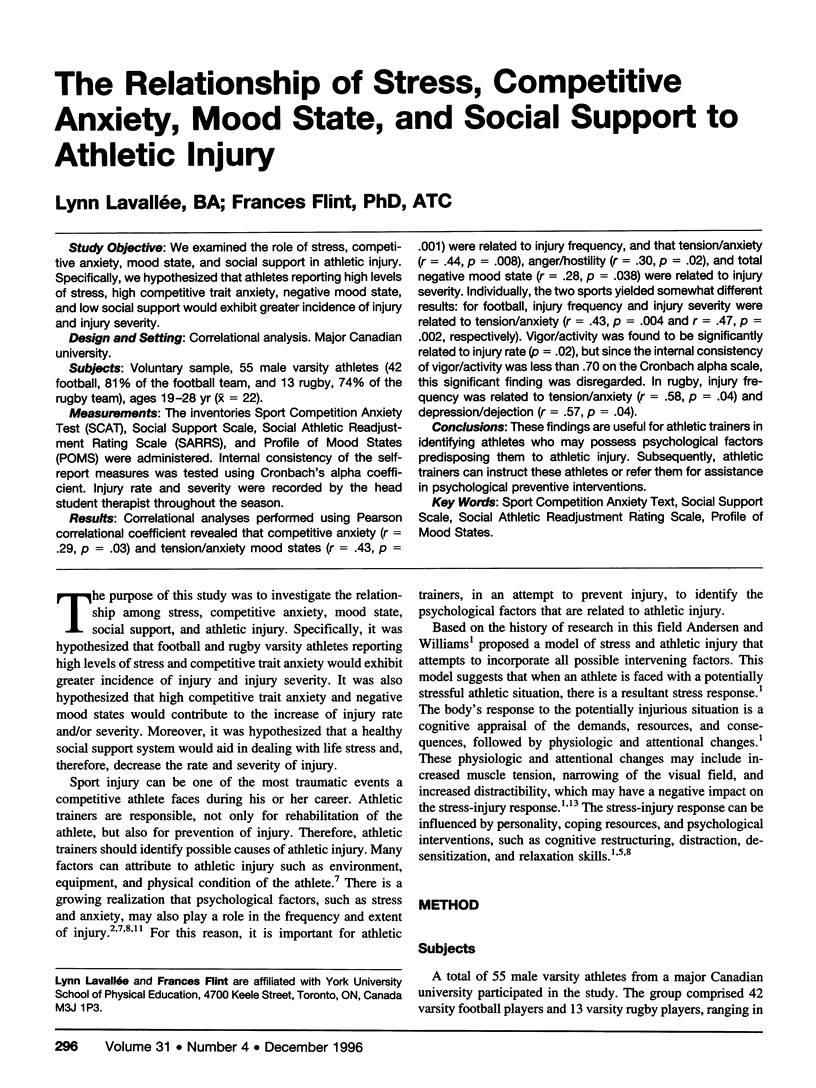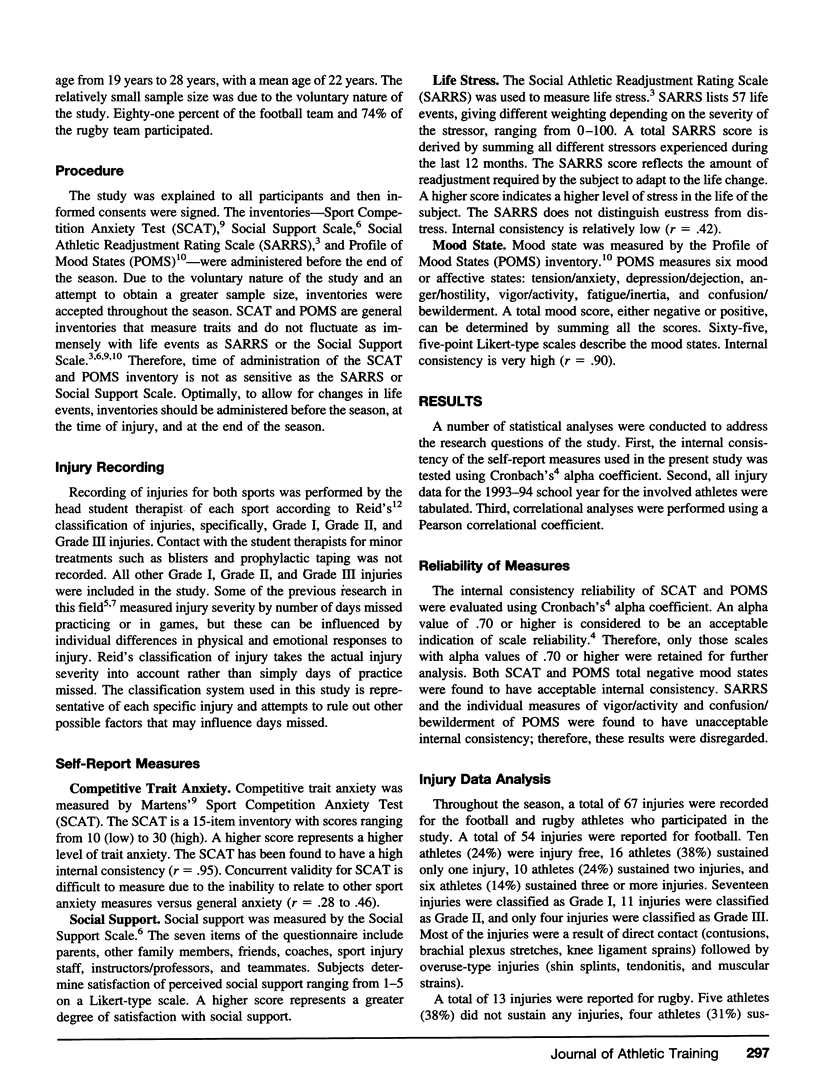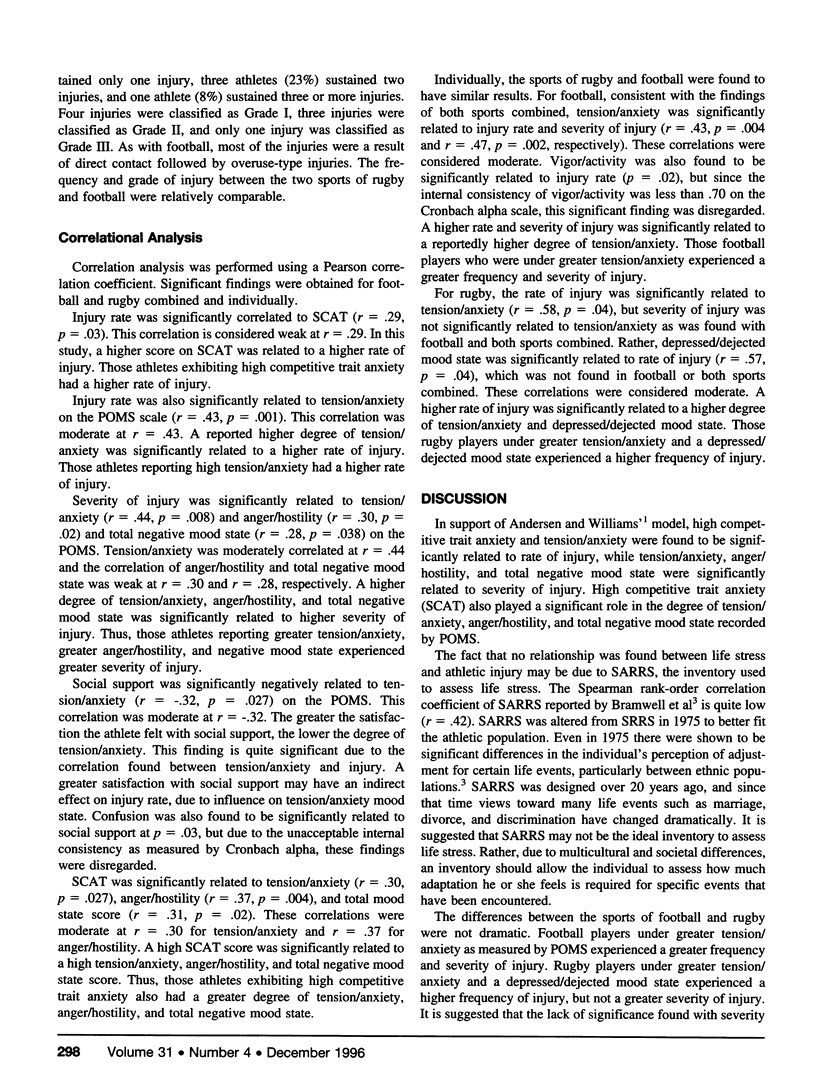Abstract
Study Objective:
We examined the role of stress, competitive anxiety, mood state, and social support in athletic injury. Specifically, we hypothesized that athletes reporting high levels of stress, high competitive trait anxiety, negative mood state, and low social support would exhibit greater incidence of injury and injury severity.
Design and Setting:
Correlational analysis. Major Canadian university.
Subjects:
Voluntary sample, 55 male varsity athletes (42 football, 81% of the football team, and 13 rugby, 74% of the rugby team), ages 19-28 yr (× = 22).
Measurements:
The inventories Sport Competition Anxiety Test (SCAT), Social Support Scale, Social Athletic Readjustment Rating Scale (SARRS), and Profile of Mood States (POMS) were administered. Internal consistency of the self- report measures was tested using Cronbach's alpha coefficient. Injury rate and severity were recorded by the head student therapist throughout the season.
Results:
Correlational analyses performed using Pearson correlational coefficient revealed that competitive anxiety (r = .29, p = .03) and tension/anxiety mood states (r = .43, p = .001) were related to injury frequency, and that tension/anxiety (r = .44, p = .008), anger/hostility (r = .30, p = .02), and total negative mood state (r = .28, p = .038) were related to injury severity. Individually, the two sports yielded somewhat different results: for football, injury frequency and injury severity were related to tension/ anxiety (r = .43, p = .004 and r = .47, p = .002, respectively). Vigor/activity was found to be significantly related to injury rate (p = .02), but since the internal consistency of vigor/activity was less than .70 on the Cronbach alpha scale, this significant finding was disregarded. In rugby, injury frequency was related to tension/anxiety (r = .58, p = .04) and depression/ dejection (r = .57, p = .04).
Conclusions:
These findings are useful for athletic trainers in identifying athletes who may possess psychological factors predisposing them to athletic injury. Subsequently, athletic trainers can instruct these athletes or refer them for assistance in psychological preventive interventions.
Keywords: Sport Competition Anxiety Text, Social Support Scale, Social Athletic Readjustment Rating Scale, Profile of Mood States
Full text
PDF



Selected References
These references are in PubMed. This may not be the complete list of references from this article.
- Bramwell S. T., Masuda M., Wagner N. N., Holmes T. H. Psychosocial factors in athletic injuries: development and application of the social and athletic readjustment rating scale (SARRS). J Human Stress. 1975 Jun;1(2):6–20. doi: 10.1080/0097840X.1975.9940404. [DOI] [PubMed] [Google Scholar]
- Kerr G., Fowler B. The relationship between psychological factors and sports injuries. Sports Med. 1988 Sep;6(3):127–134. doi: 10.2165/00007256-198806030-00001. [DOI] [PubMed] [Google Scholar]
- Petrie T. A. Psychosocial antecedents of athletic injury: the effects of life stress and social support on female collegiate gymnasts. Behav Med. 1992 Fall;18(3):127–138. doi: 10.1080/08964289.1992.9936963. [DOI] [PubMed] [Google Scholar]


